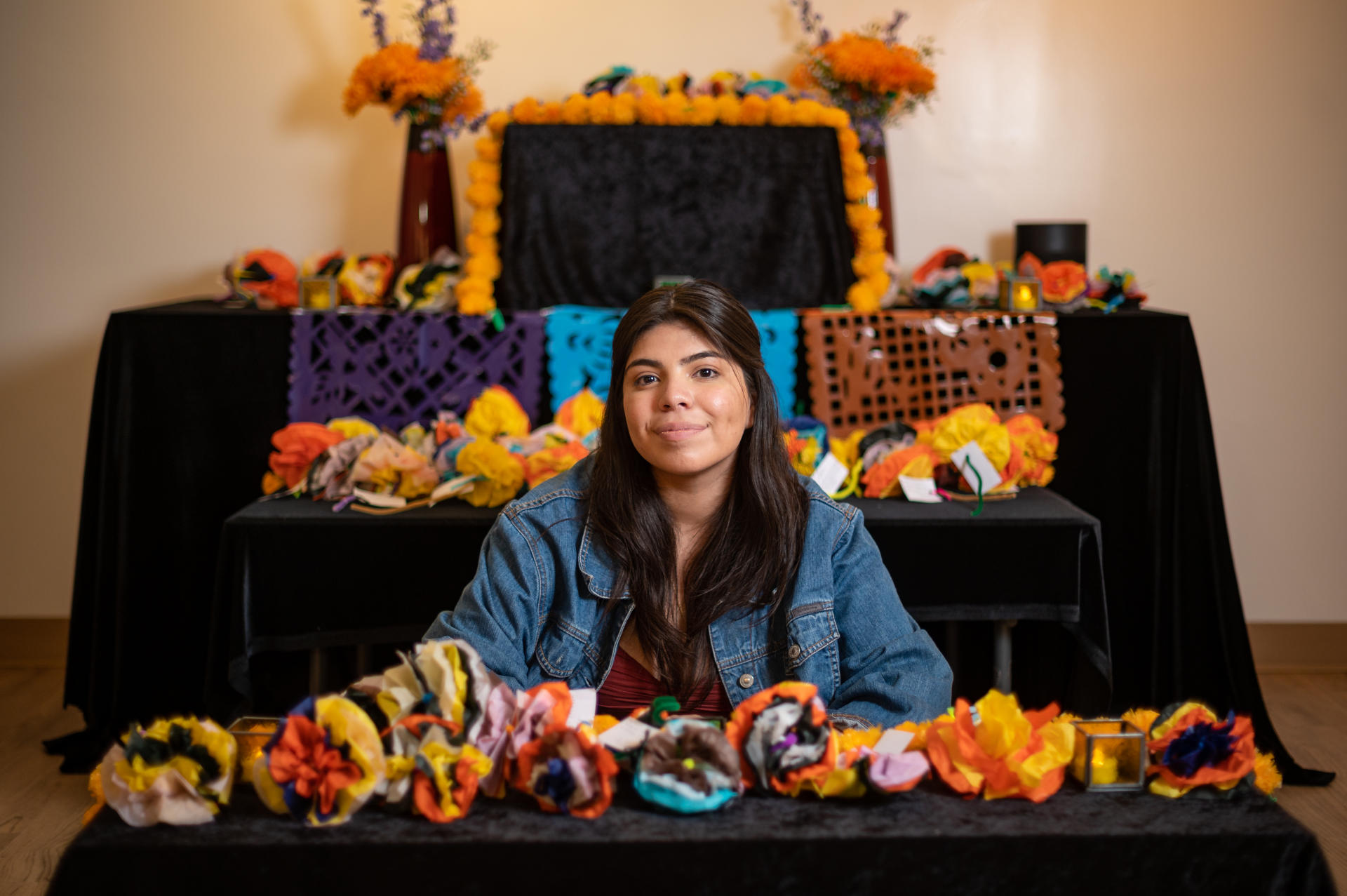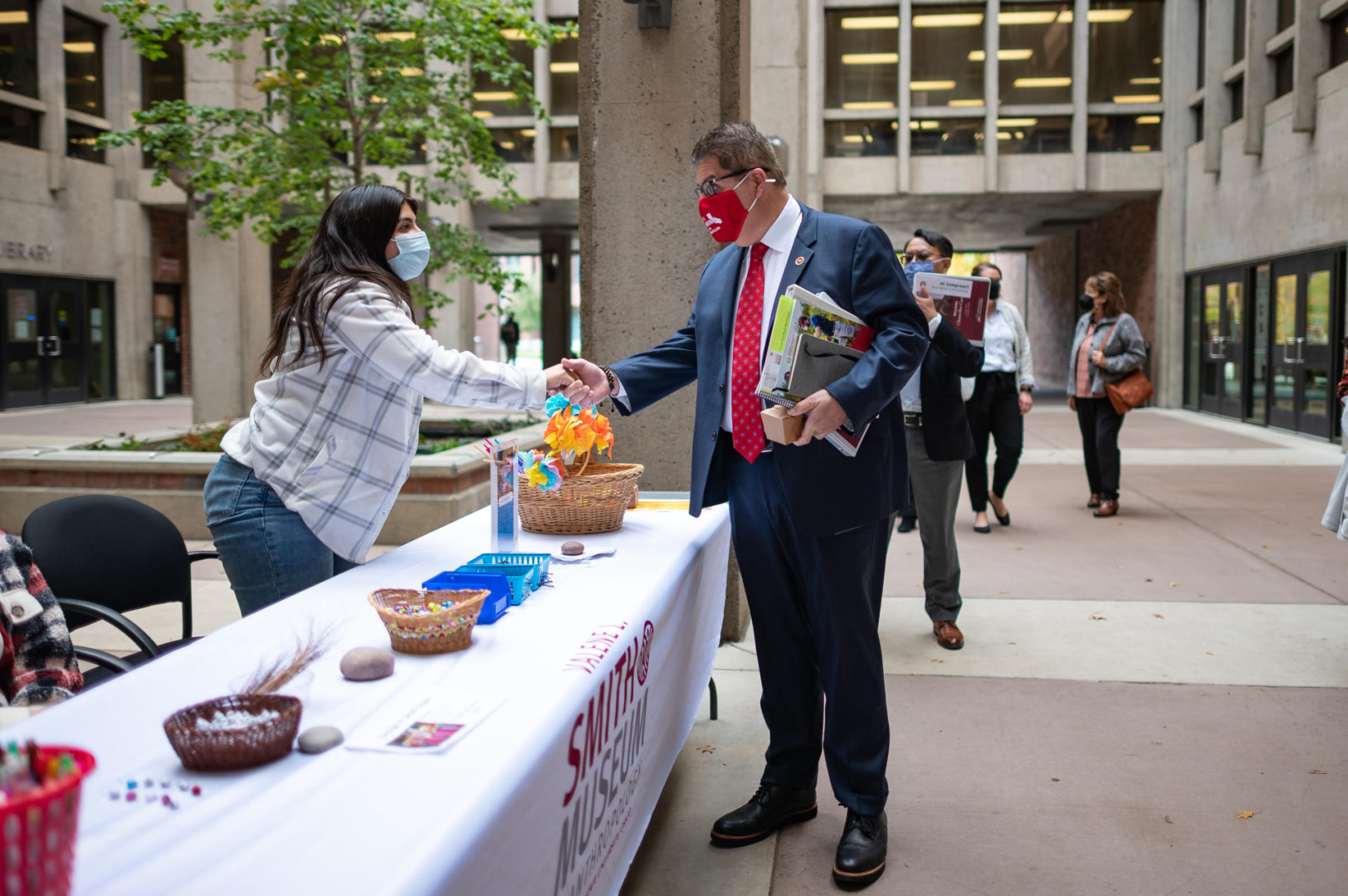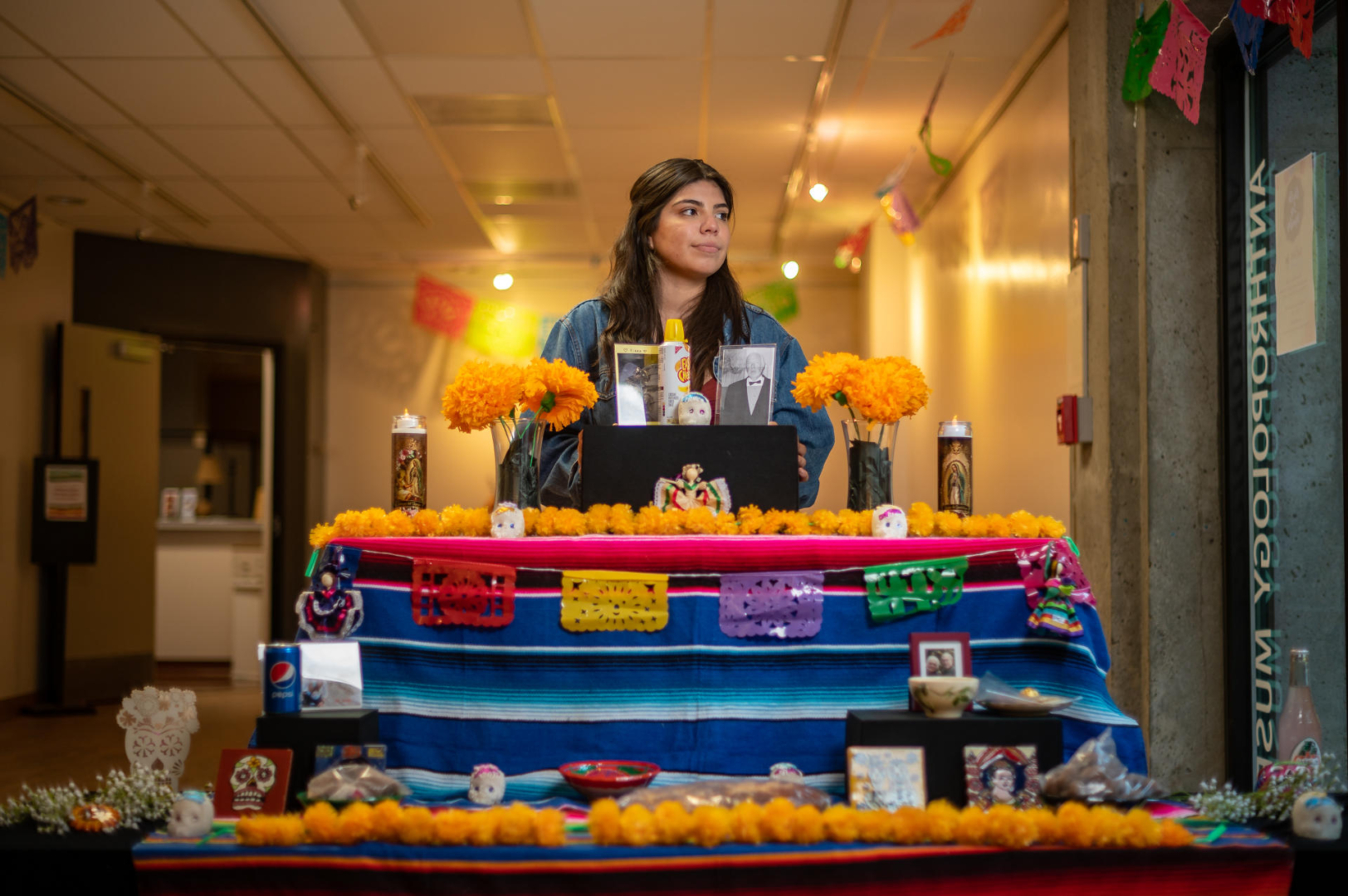Day of the Dead Altar: A Celebration of Life

Lupe Cruz (3rd year Child Development major) is photographed for the #WeAreChico series on Thursday, October 28, 2021 in Chico, Calif. When asked “What is one tradition from Dia de los Muretos you appreciate and why?” , Cruz replied “My family; we love everything about day of the dead. It’s just we love when we can make food for everyone, whether it’s mole or something called Enfrijoladas or even just a normal meal. We make extra plate for our loved ones and we just speak to them at the dinner table as if they’re there. We just talk about them and we talk about how we wish they were here, like remember when he did this. It’s just really wholesome and really nice to talk about them. When people speak to me about Day of the Dead, I just think it’s very simple to the point; where it’s like life is short, life is sweet, life is quick, life is what you make it sometimes. Life is hard, but you have to enjoy the little things because when you’re gone, like, people still miss you when you get older. You wish you’d experienced little things like you did when you were younger. Life is just like really beautiful. We try to celebrate as much as we can and daily that can be like a way of thinking ’cause you know everyone leaves and everyone sometimes watches over you. And it’s a great coping mechanism that I wish a lot of people had ’cause it’s not easy losing a loved one.” (Jason Halley/University Photographer/Chico State)
By Guadalupe Cruz (Junior, Child Development)
I am from Los Angeles and my parents are originally from Oaxaca, Mexico. When my supervisor at the Valene L. Smith Museum of Anthropology, Adrienne Scott, asked if I could set up an altar for Dia de los Muertos this year, I immediately agreed to it.
I assumed many people knew and understood the meaning behind the altar—I didn’t think it was a big deal. But the more I spoke to Adrienne and museum staff Heather McCafferty about the Dia de los Muertos traditions in my mother’s house, I realized there was a lot of curiosity behind the celebration, which made me more excited to work with my community and set up an altar to represent this special holiday on our campus.
Dia de los Muertos starts on October 31 and runs through November 3. We start decorating the altar on Halloween and place it in our homes. We gather photos of our deceased loved ones with their favorite objects and foods. For example, I place a photo of my grandpa with a bottle of Coca-Cola and pomegranates—two things we knew he loved when he was alive.
I grew up with a large family, so I usually arrange a number of photos around the altar, ranging from my 30-year-old cousin, who died in 2020, to my great-grandparents, who died in the 1990s. We also decorate the altar with cempasuchil, or marigolds, also called “flower of the dead,” and place them in vases around the altar—while some families create a trail of petals in front. We believe the scents from the flowers and lit candles help guide the dead.

On Dia de los Muertos, the deceased spirits come and visit loved ones on earth. We also decorate altars with bread of the dead, water, salt, candy, and other offerings. We believe our deceased love ones will take these as gifts for their journey and be blessed by our memory of them.
On November 1, we make food for the whole family and leave an extra plate for the altar. We gather for our family feast and speak about our loved ones and the positive memories we carry about them. The younger family members learn more about the older ones that passed before they were born. It is a very wholesome experience that ends with everyone laughing and remembering how beautiful life is.
Other objects often placed on the altar are the famous sugar skulls that represent the sweetness of life. There is also beautiful papel picado, or punched paper. The easy-to-tear tissue paper and colorful artwork help us remember the beauty but also the fragility of life. An altar is unique to every home, but most who celebrate Dia de los Muertos are Catholic, so there are a number of crosses that represent Jesus, as well as Virgin Mary, Virgin Guadalupe, and the saints.
Last week, when sitting in front of the museum on campus, many students visited and were eager to learn more about this holiday I grew up with. We also had staff and students who shared pictures of their own altars at home. Many in Chico do celebrate this holiday and were happy to see the altar on display. I love to describe our altar to kids like a Christmas tree—A Christmas tree has unique decorations in every household but also has the same traditional objects for all who celebrate.

My mother was a big help for this project. She loaned most of her traditional blankets and altar cloths, bread found in Los Angeles, and many other objects I placed on the museum’s altar. Also, everyone in the museum helped out and asked so many questions about what everything meant. We all brought images and favorite foods, and shared stories of loved ones who passed away. Everyone was so respectful about the traditions that go to making an altar.
I had a lot of fun making it and I am really happy it came out in an authentic way. Students from Spanish classes at Inspire School of Arts and Sciences came by on field trips and I loved seeing them participate in activities and leaving notes for their loved ones in the community altar. It is a joy to see all the homemade flowers with their notes.
I understand that talking about death is very sensitive for some, but I am very willing to share my traditions about my deceased loved ones, and I am glad everyone I have spoken to listened. In my culture, speaking about our deceased loved ones brings back their memory and keeps us together as a family. Dia de los Muertos is time to celebrate belonging, not a time of grief.
Guadalupe Cruz is a child development major at Chico State and a student assistant at the Valene L. Smith Museum of Anthropology.


